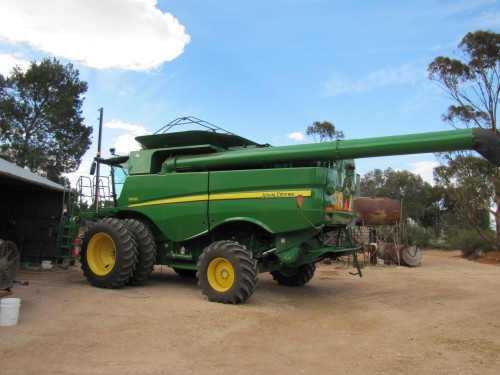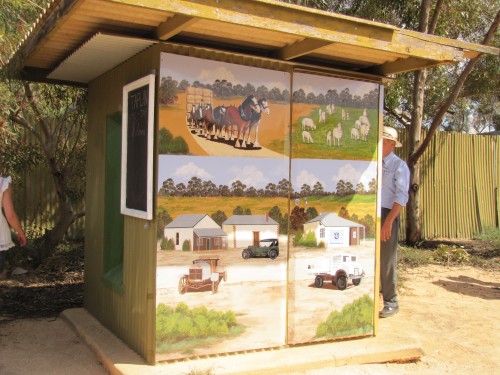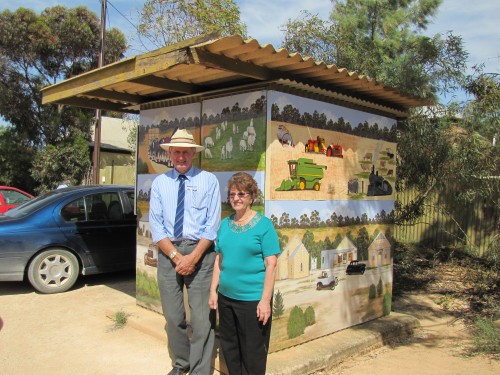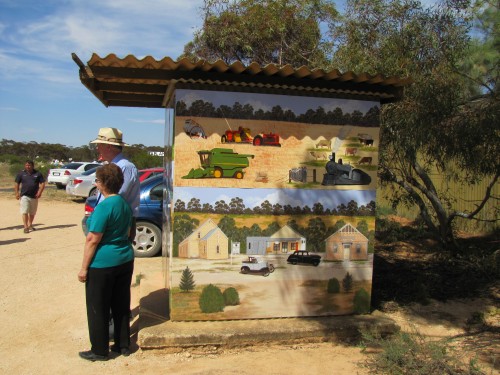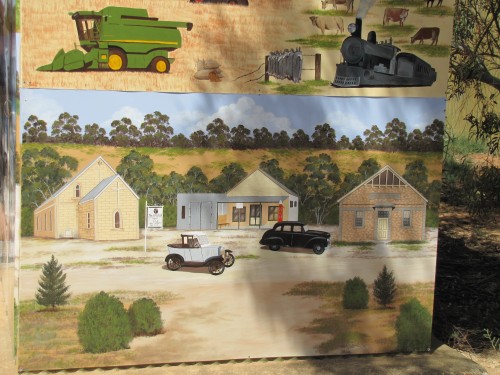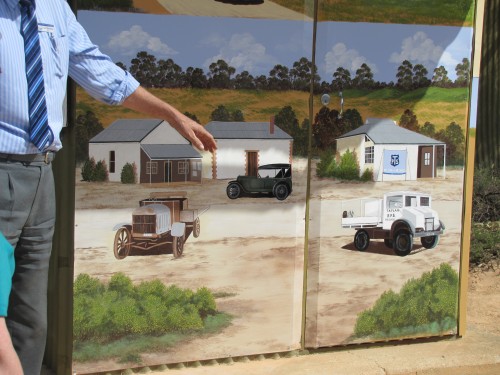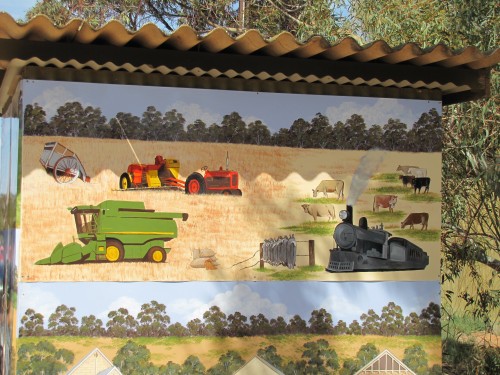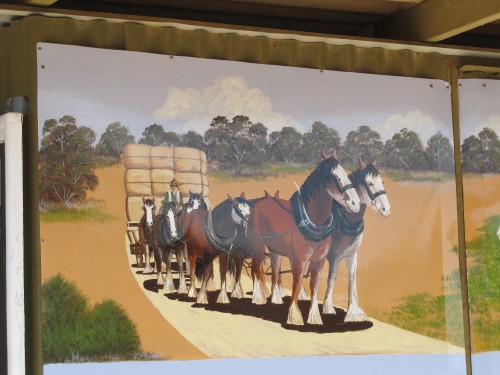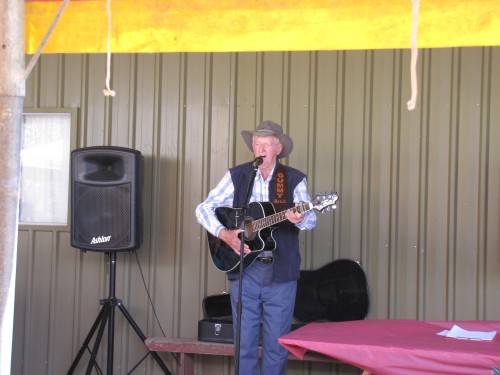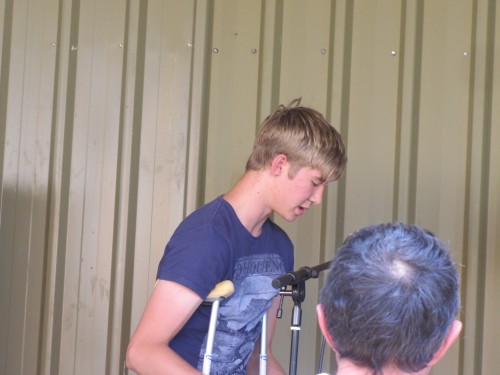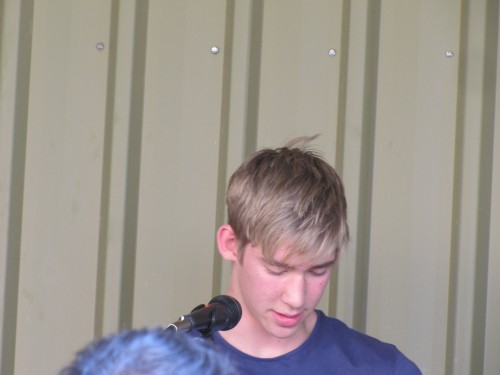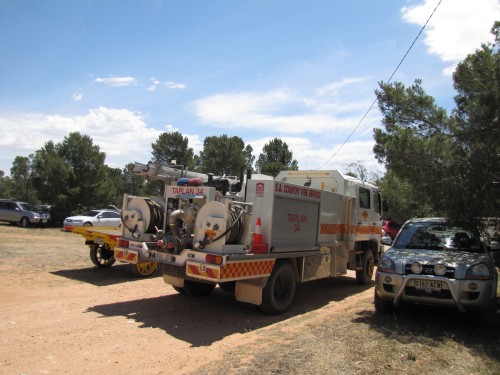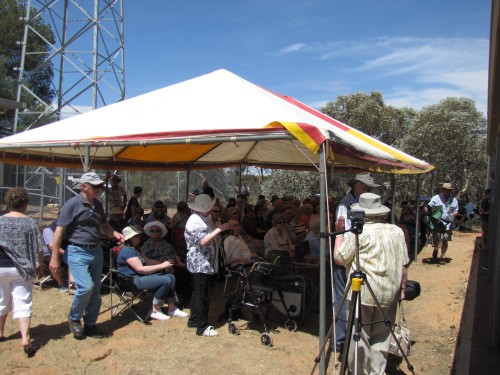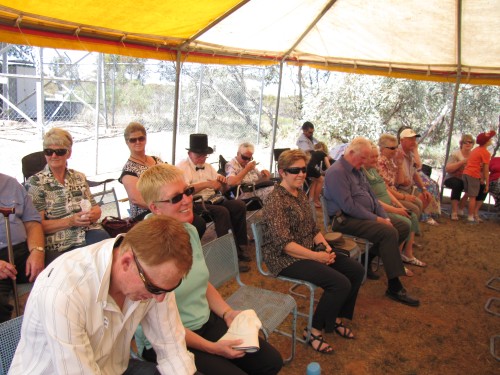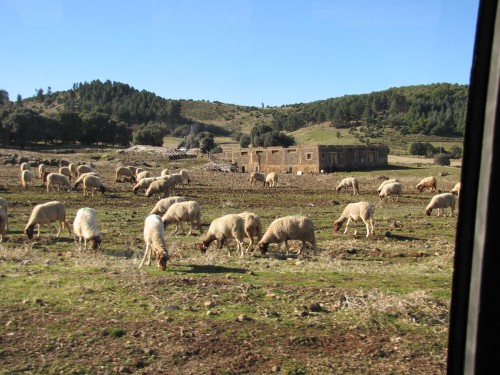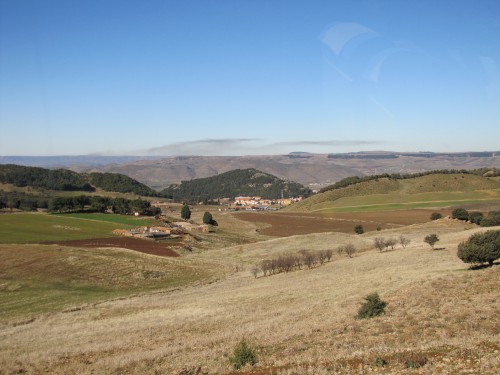Modern farming machinery at Taplan
The last time I visited Taplan was during the Railway Centenary Celebrations in October 2013. Taplan is a small farming community about 30km south-east of Loxton in South Australia. I have written extensively of this town and district in recent days here on this site. Taplan is the small town where I grew up on my father’s farm. When my father retired into Loxton, my brother took over the family farm. When he retired my nephew took over and his sons look like keeping the trend going in the years to come.
On that last visit my brother took me to my nephew’s farm to show me the harvester (see photo above) he uses when reaping the cereal crops, mainly wheat and canola. A machine like this is expensive, somewhere in the region of three-quarters of a million dollars. He has since traded this machine in on a new one.
Sometimes my brother and I reminisce about the days when our father started out farming. He started in the late 1920s with a six foot (1.8 metre) comb on his wheat harvester. It was pulled by a team of horses. The new machine does cuts 54 feet wide (16.45 metres). And he doesn’t actually have to “drive” it because it is GPS guided with constant computer analysis of the yield of each section of the paddock. Our father would not believe what my nephew is doing to improve the productivity of the land he once farmed, or the machinery he now uses.
Even I can hardly believe it.
Taplan mural paintings
As a part of the Taplan Railway Centenary celebrations in 2013 there was special mention made of the new murals painted on the telephone exchange building. This small structure, shown in today’s series of photos taken on the day, replaced the old manual telephone exchange in the nearby post office many years ago. This building also doubles as a mail centre, the letters being sorted regularly into a handful of post office boxes in the side of it.
When I was growing up in the 1950s and 60s I would walk past this spot twice every day on my way to and from school a few hundred metres away. Behind this modern structure is the old post office where I would stop every day on my way home to collect the mail from a window, behind which the post master sat. His job every day would be to sort the few dozen letters addressed to residents in the area. He also manned the manual telephone exchange, connecting incoming calls to the number being called.
The phones in the homes of the district were typical of many used throughout rural Australia of that era. A bulky wooden cabinet hung on the wall in our dining room, with a large mouthpiece and a cord attached to an earpiece. When there was an incoming call, the phone would ring loudly and to answer one picked up the ear piece from its cradle and spoke into the mouthpiece. The person manning the exchange then connected the caller. To make a call one would pick up the earpiece and turn a handle, alerting the person in the exchange that you wanted to make a call, which they then connected for you. My parents would be astounded by the modern mobile phone and the many things one can do on one.
In the photos below I have show the new murals from different angles. One photo shows the artist and the Mayor of Loxton Waikerie who declared the murals open. The paintings, based on local scenes and local farming equipment down through the years, show typical scenarios of life in the Taplan region.
Taplan Railway Centenary Celebrations part 4
Over recent days I have been writing about the Taplan Railway Centenary celebrations held last October. Before the speakers came to give their presentation, the gentleman shown above entertained the gathered crowd with a few appropriate songs he had written about the locale. He is a current resident of the town and well known for his songs.
After the official welcome each of the founding families had a representative come to the microphone to give a short presentation about their place in the history of the Taplan district, south east of Loxton in South Australia. The first settlers came in the late 1800s, but it was not until the water pipeline and the railway line were built in 1913 that the town really flourished. I went to the local school in the 1950s. It is no longer open.
All of the people doing a presentation related events in their family history, each one presenting it like a diary entry written by their ancestor. It was very effective way of presenting history. One of the presenters was my great nephew Lochie who told about the struggles of my father (his great grandfather) and his grandfather (my brother). Lochie’s father now farms the family land and he is quickly learning the ropes too. His hands-on approach, even as a teenager, is already proving invaluable in the daily running of the property.
His great grandfather would be utterly amazed at the scale of farming being undertaken today, and the vast array and size of machinery now utilised in this district.
Taplan Railway Centenary Celebrations part 3
Last October my wife and I attended the Taplan Centenary celebrations. Taplan is a small farming community south east of Loxton and close to the Victorian border in the Murray Mallee region of South Australia. I grew up on my father’s wheat and sheep farm near the town and attended the local primary school from 1954 to 1960. Last October marked 100 years since the establishment of the railway line from Tailem Bend to Renmark.
At the same time reticulated water reached the town from the River Murray at Loxton. These two factors alone gave a struggling community an amazing boost. Now longer was it required to cart water from the river – some 30km away – but goods such as wheat, wool and animals could be easily transported to market. Many other items such as mail could now be delivered daily by train, along with many other necessities.
During the formal part of the proceedings the large crowd were kept relatively comfortable in the hot conditions under a marquee erected just outside the Country Fire Service (CFS) shed in the main street. Before the speeches and presentations, visitors and locals were able to inspect the vast array of memorabilia and photographic displays inside the shed. All major families of the district were represented in this interesting display.
I will show more photos tomorrow.
Country scenes in eastern Morocco
I come from a farming background. The first 15 or so years of my life were spent living on my father’s farm in the Murray Mallee district of South Australia. Although I spent most of my working life in a school classroom, I still have a close affinity with the land. Today in retirement I still own a small “farm”, albeit only 5 acres in size and I no longer keep any chickens, ducks and sheep like I used to some years ago.
Wherever we travel I take a keen interest in the countryside as we journey, keeping an eye out not only for birds (birding is a passion of mine) but also casting an eye over the farming countryside. So it was with great interest that I watched the passing farmland practices while journeying through Morocco. Previously I have commented on the similarities that the rural environment in Morocco has with parts of South Australia. There are, however, many contrasts too, as illustrated in today’s photos.
I don’t know what breed of sheep are shown in the photo above, but they are significantly different from the common Merino breed we have here in SA. We also saw many goats in Morocco, something you tend not to see in the cereal growing areas at home.
